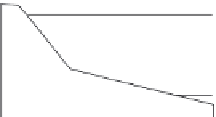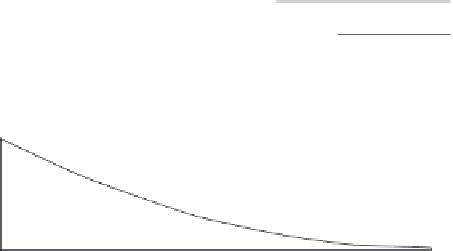Geoscience Reference
In-Depth Information
Dimensionless fall velocity
W
=
H
b
/
w
s
T
Reflective Intermediate Dissipative
0
2
5
Reflective Barred Barred dissipative
Cusps
Steep beachface
HT
LT
0
Cusps
−
2
Deep trough
Pronounced
bar
Refective beachface
Steep beachface
HT
LT
HT
LT
0
−
2
0
−
2
Bar 1
0
100
200
Bar 2
Bar n
Step
Subdued multiple bar-
trough morphology
Steep beachface
HT
LT
0
−
2
0
100
Deep trough
0
100
200
0
100
200
Low tide terrace + rip Low tide bar/rip Non-barred dissipative
Cusps
R
eflective beachface
Low tide terrace
with rips
Steep beachface
HT
0
HT
0
0
HT
LT
(Swash bar)
−
2
Low tide
transverse bar and rip
morphology
Flat and featureless
−
2
LT
−
2
LT
−
4
0
100
200
0
100
200
300
0
100
200
300
Low tide terrace Ultra-dissipative
(Cusps)
0
−
2
−
HT
HT
0
Reflective high tide beach
−
2
Flat and featureless
4
Dissipative low tide terrace
−
4
−
6
LT
−
6
LT
0
100
200
300
0
100
200
300
400
500
600
Transition to tide-dominated tidal flats
Fig. 8.12
Conceptual beach state models for micro- to macrotidal beaches: MSR, mean spring tidal range;
H
b
, breaking wave height;
W
s
, sediment fall velocity;
T
, wave period. With increasing breaking wave height and/or decreasing grain size, beaches become gentler
in gradient and more 'dissipative' of incident wave energy. The relationship of tidal range and breaking wave height (relative tidal range)
mediates the vertical range over which wave energy is dissipated. Thus beaches with larger tidal range become progressively more
dissipative. (After Masselink & Short 1993.)
but also their comparative resistance to movement
under low wave energy, to exhibit landward
migration via barrier overwashing. High poros-
ity precludes a seaward return mechanism for
beach clasts and thus gravel beaches tend to be
steep because of the higher angle of repose of
coarse clasts. Sand beaches are the most widely
distributed and morphologically variable of beach
types. For this reason they have been studied
more intensively than other types. Attempts to
synthesize studies of beach morphology have
been made, perhaps the best known resulting in
the concept of beach state models (Wright &
Short 1984; Masselink & Short 1993). These
studies recognize spectra of beach types that
are arrayed on a dissipative (low-angle beach
gradient) to reflective (steep gradient) continuum
(Fig. 8.12).
Dissipative beaches are associated with long
period, large waves with high incident energy.
Energy is dissipated by wave breaking across a
wide, low-angle shoreface such that waves at the
shoreline have little remaining energy. Because
such beaches are associated with long-period
waves, these are often fully refracted by the time
they reach the shoreline and hence temporal
morphological variability on such beaches is
comparatively low. Reflective beaches at the
opposite end of the continuum are associated
with coarser sediment and/or smaller waves of


























